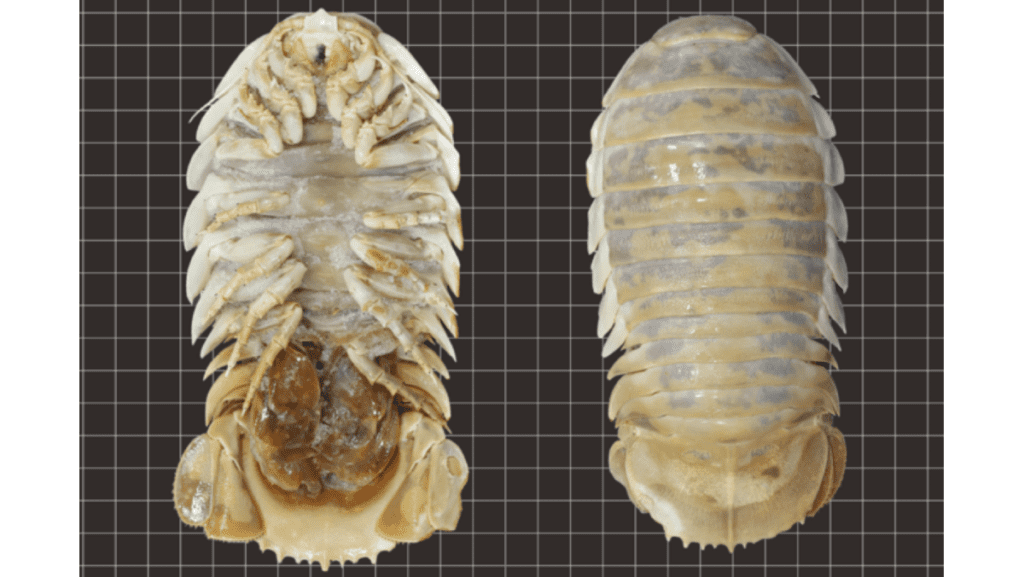A crustacean kept in an aquarium in Japan has now been found to be a new species. The discovery adds to the almost two dozen known species of giant isopods (Bathynomus) – massive crustaceans that seem out of a science fiction movie and use their 14 legs to move around the deepest and darkest waters of the Pacific, Indian, and Atlantic Oceans.

When collected from a baited trap off the coast of Mexico in 2017, the yellow crustacean was assumed to belong to the Bathonymus giganteus species of isopod — the giant isopod first described in 1879. It was purchased by the Enoshima Aquarium in Fujisawa, Japan, and kept its secrets hidden until researchers sequenced their DNA for a project on isopod genetics.
The genetic sequence showed over 35 differences between Bathonymus giganteus and this isopod, which means it was something new. The researchers describe the isopod in a study. They dubbed it Bathynomus yucatanensis after Mexico’s Yucatán Peninsula, where it was captured over 2,500 feet beneath the waves.
A new and massive isopod
Isopods are aquatic animals with several limbs and antennae all attached to one body. While they vary in size, most measure less than 10 millimeters — but not the giant isopods. The about 20 species in the Bathynomus genus can grow to be more than 30 times larger, as is the case with this new species: with a creamy-yellow shell, this species is about 26 centimeters long (10 inches), the researchers write.
But while they may look creepy, these isopods are not as fierce as they look. Isopods are essentially scavengers and eat any food that falls from closer to the surface, as the seafloor is largely barren. They occasionally get big parcels of food reaching the seabed, for instance when the carcass of a whale or another large animal falls down. This means they have to be patient with their food. Fortunately, their metabolism is incredibly slow.
“Bathynomus giganteus was discovered over a century ago, and more than 1,000 specimens have been studied with no suggestion until now of a second species,” the researchers said in a statement. “Superficial examination, using only pleotelson spines, could easily result in specimens of B. yucatanensis being misidentified as B. giganteus.”
Upon closer examination, the researchers found a handful of features that make B. yucatanensis unique. Compared to B. giganteus, this new giant isopod had more slender body proportions and is shorter in total length. It also has extra-long antennae and a yellow shell that helps it stand out from the rest of the grey crustaceans.
In order to make sure it was a new species, the researchers did a molecular genetic analysis, comparing B. giganteus and B. yucatanensis. They also constructed a family tree, which showed B. yucatanensis as most closely related to B. giganteus. “The two species likely had a common ancestor,” the researchers wrote in their recent paper.
As of now, this finding brings the total to three – B. maxeyorum, described in 2016, B. giganteus and B. yucatanensis. However, the researchers believe there could be other other Bathynomus species still undiscovered in the Gulf of Mexico. Identifying these species is important for conservation as giant isopods are usual targets of fisheries, they said.
The study was published in the Journal of Natural History.






